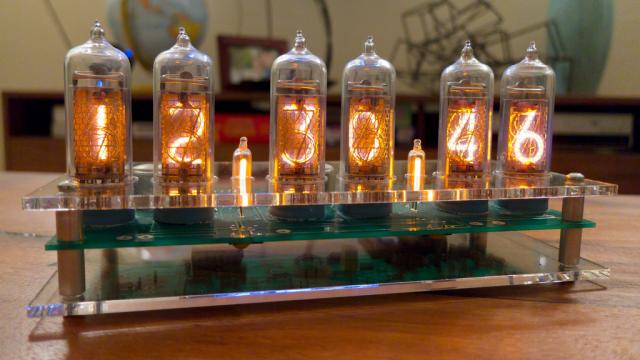After the introduction of a new kind of atomic clock, the world’s most expert timekeepers are considering making an update to how we measure a simple second. It would be more accurate, sure. But it would also force us rethink theoretical physics as we know it.
Jérôme Lodewyck and his colleagues report that the two new optical lattice clocks they’ve been testing at the Paris Observatory are about as accurate as accurate gets, and the improved precision might justify a change in the global time standard. Developed at the National Institute of Standards and Technology, these optical lattice clocks are about 100 times more accurate than the atomic clocks currently used to sync the world’s watches. Even still, it would take you a few million years before you’d notice the difference.
But that’s not the point. Time can be used to measure more than Olympic swimming matches. The new optical lattice clocks are so precise they can measure red shift, the phenomenon of time slowing down around objects with a big gravitational pull, and gauge changes in the Earth’s surface of a single centimetre. While existing clocks can measure red shift, they can only do so accurately within meters or kilometers. From there, the improved accuracy has all sorts of implications for theoretical physics and will help scientists test some of the most outlandish hypotheses.
The current standard measurement for a second has been in place since 1967, when scientists measured the radiation emitted from a caesium atom jumping from one state to another. One second was defined as 9,192,631,770 oscillations, which has remained the standard for the timekeepers at NIST, the Paris Observatory, and other atomic clocks around the world.The new method, however, triple checks its own work by collecting yterbium atoms in an optical lattice formed by a laser beam bounced off a mirror. Once the atoms are in place, scientists zap them with another laser to measure the electronic shifts on each atom. Together the result is the most accurate clock the world has ever seen.
It’s not time to throw all the old conventions out the window just yet. Just because we can establish a new standard measurement of a second doesn’t mean that we should. The old system is already in place and working well at research institutions all over the world. Outfitting all of those places with a new kind of atomic clock and getting them to adjust their measurements to a new standard sounds like a big headache, especially for those folks who aren’t doing intense theoretical physics.
On the same token, everybody wins when science becomes more accurate. Nature, who published a story about the new clocks this week, calls these new atomic clocks “a boon to basic science”. And if we can use amazing new tools to learn amazing new things about the origins of the universe, why wouldn’t we? [Nature]
Picture: Flickr/mightyohm
